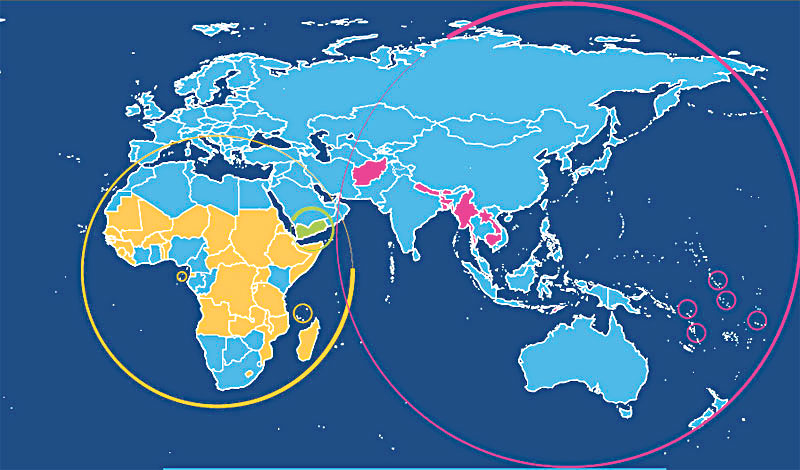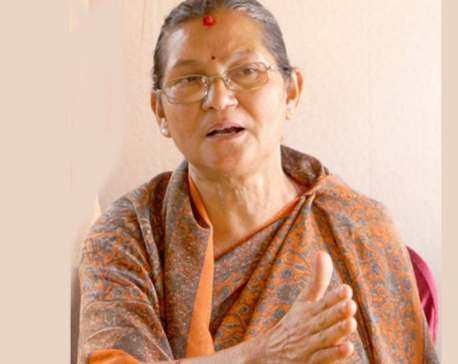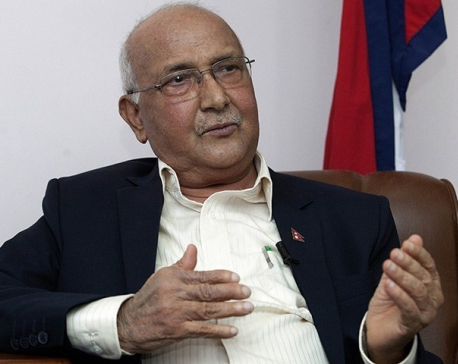
OR

For me, one achievement of the United Nations Conference on Mid-Term Review of Istanbul Programme of Action (IPoA) for the Least Developed Countries (LDCs), that took place in Antalya, Turkey last month, has been this newfound urge to explore more about LDC issues and UN’s possible role in their graduation to middle-income status. So here is a postscript note to my previous piece “The futile summitry” (June 11).
Frankly, I knew and cared little about issues facing LDCs until I participated in the Antalya jamboree, partly because literature on LDCs is confusing for outsiders and partly because I took LDCs for granted. I have now realized that LDCs demand greater understanding and greater debate both in the media as well as the academia. One or two op-ed columns can, if at all, only scratch the surface of the matter.
The most important question that every LDC must reflect on is: Why are they poor? For Nepal and Nepalis, the most vexing issue should be why we are still a LDC—poor, underdeveloped, dependent on foreign aid and with multiple problems.
Available literature on LDCs (and there is a great of deal of it) has straightforward answers: LDCs are LDCs because there is weak governance, insufficient international aid, low per capita income, extreme poverty, massive unemployment, low level of human resource development, high degree of economic vulnerability, poor infrastructural development, socio-economic and political instability, and so on and so forth.
Such literature also claims most of these problems are getting solved. UN’s Millennium Development Goals Report (2015), for example, mentions that most LDCs have made great strides in education, poverty eradication, and controlling infant and mother mortality.
Therefore it would not be right to claim all LDCs suffer all of these maladies.
True, poor governance, corruption, instability, economic inequalities and brain drain have become defining features of Nepal. Together, they have pushed millions of Nepalis out of the country for menial jobs, at great human and social costs.
But Nepal has been receiving a large amount of foreign aid for past 60 years—amounting to billions of dollars according to informal estimates—to the extent that the donor nations openly express their frustration at Nepal’s inability to spend.
Terrorism and internal conflict have ravaged most African LDCs. But Nepal is still one of the safest and the most exotic countries in the world. I am not saying this because Nepal is my home country. Every foreign visitor who has set foot here says the same. But its natural beauty is no criteria for graduation.
Nepal should have graduated in 2001. It did not. It should be graduating by 2022, but we won’t be able to. Perhaps the next target for graduation will be 2032. So Nepal is likely to remain a LDC for at least the next two decades. Why?
Call it a coincidence or fate, Nepal got LDC status in October 1971—three months before King Mahendra died and the reign was handed to more liberal Birendra. There have been a number of attempts to improve the country’s development status since.
Birendra, the inheritor of LDC, introduced an ambitious program of bikashko mul phutaune (“bringing a deluge of development”) in 1972 by engaging people in nation building. He declared primary education free. Later he promised “Asian life standards” for all Nepalis. This was followed by the political change of 1990, which brought more instability and misrule.
Maoist revolution pushed more Nepalis out of the country and virtually ruined the national economy. This was followed by another revolution to manage the Maoists and abolish monarchy. Even after the new constitution has been drafted and country embarked on new age, development, in all likelihood, is likely to remain a mirage.
As in the past, we will point finger at political system. Until monarchy prevailed, we said Nepal is poor because the king has centralized all powers. Then during the 1990s, we pointed the finger at Maoist insurgency.
For their part, the Maoists blamed the parliamentary parties and the king as the agents of underdevelopment. Then we were told Nepal is poor because it is not a federal republic. Now that we are both federal and republic, these same issues are going to become excuse for our LDC status. Perhaps Nepal will be telling the next LDC conference: We were at the threshold of graduating but we could not because we could not implement federalism.
We will be back to LDC from an LDC.
The truth is, in the last 25 years since the country became a democracy, there have been no genuine efforts to improve governance and promote development. Political actors have made it a point to extract state resources for personal gains. Whatever good has happened seems to be an outcome of evolution rather than coordinated development efforts. Society moves forward on its own, sometimes even unaided.
This, however, is a domestic explanation.
Western critics of the Western attempts for improving development status of poor countries look at the issue from a different angle. John Perkins and William Easterly are not alone in deconstructing West’s politics of foreign aids. In his 2011 essay “Why the Poor Countries are Poor?” Fabian Suchanek, Associate Professor at Télécom ParisTech University in Paris, suggests that poor countries are poor because the rich countries do not want them to become rich.
Suchanek argues that poor countries have close economic relationships with Western countries. But this is not beneficial for the poor. Foreign companies bribe government officials in poor countries to gain state contracts and other advantages.
He also contends that foreign powers, notably the US and Europe, influence politics in poor countries by financing election campaigns and funneling money to remove undesired governments.
Poor countries receive substantial amount of foreign aid but foreign countries that donate money do so in order to influence them as per their interest. He also maintains that there is indirect political pressure on poor countries to make political decisions in the interest of donor countries.
Why bring UN into this? Because LDC is a UN coinage. It is the institution that decides the threshold and criteria for graduation. It is the one which decides when a country can graduate and if it is fit for graduation. UN’s Committee for Development Policy (CDP) makes a decision to this effect. The UN thus has the ultimate say in LDC graduation.
LDCs are like subaltern communities in the comity of rich nations. Because the subalterns cannot speak for themselves, the UN has taken up the responsibility to speak on their behalf. Here is the Spivakian irony.
Post-colonial critic Gayatri Chakravorty Spivak argues that allowing western agencies and intellectuals to advocate on our behalf makes matters worse, first because they romanticize subalterns and distort the truth and second because it makes us even more dependent.
This dependence, however, works both to validate the status of subalterns as well as of the Western agencies. The UN and the global community tell us: LDCs represent an enormous human and natural resources for world economic growth, welfare and prosperity and that addressing their social development needs will contribute to peace, prosperity and sustainable development for all. This is why, goes the tacit reasoning, the global community must help in the development of LDCs.
LDCs on their part are happy being LDCs because there are benefits. LDCs are entitled to international support measures such as trade preferences, development financing, Official Development Assistance, debt relief, technical assistance and other forms of support. They also benefit from special and differential treatment regarding WTO-related obligations. Therefore some of them resist graduation.
This may be why the number of LDCs has increased instead of decreasing since 1971. When the category was introduced in 1971, 25 countries were identified as LDCs. It reached 48 in 2001 and 50 in 2005. By 2010, it was down to 49 but by 2014 it returned to 48 again.
The most dangerous thing for LDCs like Nepal is complacency. When poverty and least developed status becomes a habit, the country stands still.
@mahabirpaudyal
You May Like This

Asta Laxmi became Bagmati CM as per my wish, but she now is in a dilemma: Nepal
KATHMANDU, August 24: Chairman of the proposed CPN (Unified Socialist) party, Madhav Kumar Nepal has claimed that CPN-UML leader Ashtalakshmi... Read More...

Government school's dilemma: Free or quality education?
DANG, Jan 17: A state-run primary school, Ratri Primary School, in Ghorahi - 3 decided to enhance the quality of its... Read More...

Reject or not to reject: CPN-UML in a Hamletian dilemma over federalism
It seems that the agenda of federalism has become a burden which the main Opposition CPN-UML is no longer interested... Read More...





Just In
- NRB introduces cautiously flexible measures to address ongoing slowdown in various economic sectors
- Forced Covid-19 cremations: is it too late for redemption?
- NRB to provide collateral-free loans to foreign employment seekers
- NEB to publish Grade 12 results next week
- Body handover begins; Relatives remain dissatisfied with insurance, compensation amount
- NC defers its plan to join Koshi govt
- NRB to review microfinance loan interest rate
- 134 dead in floods and landslides since onset of monsoon this year













Leave A Comment